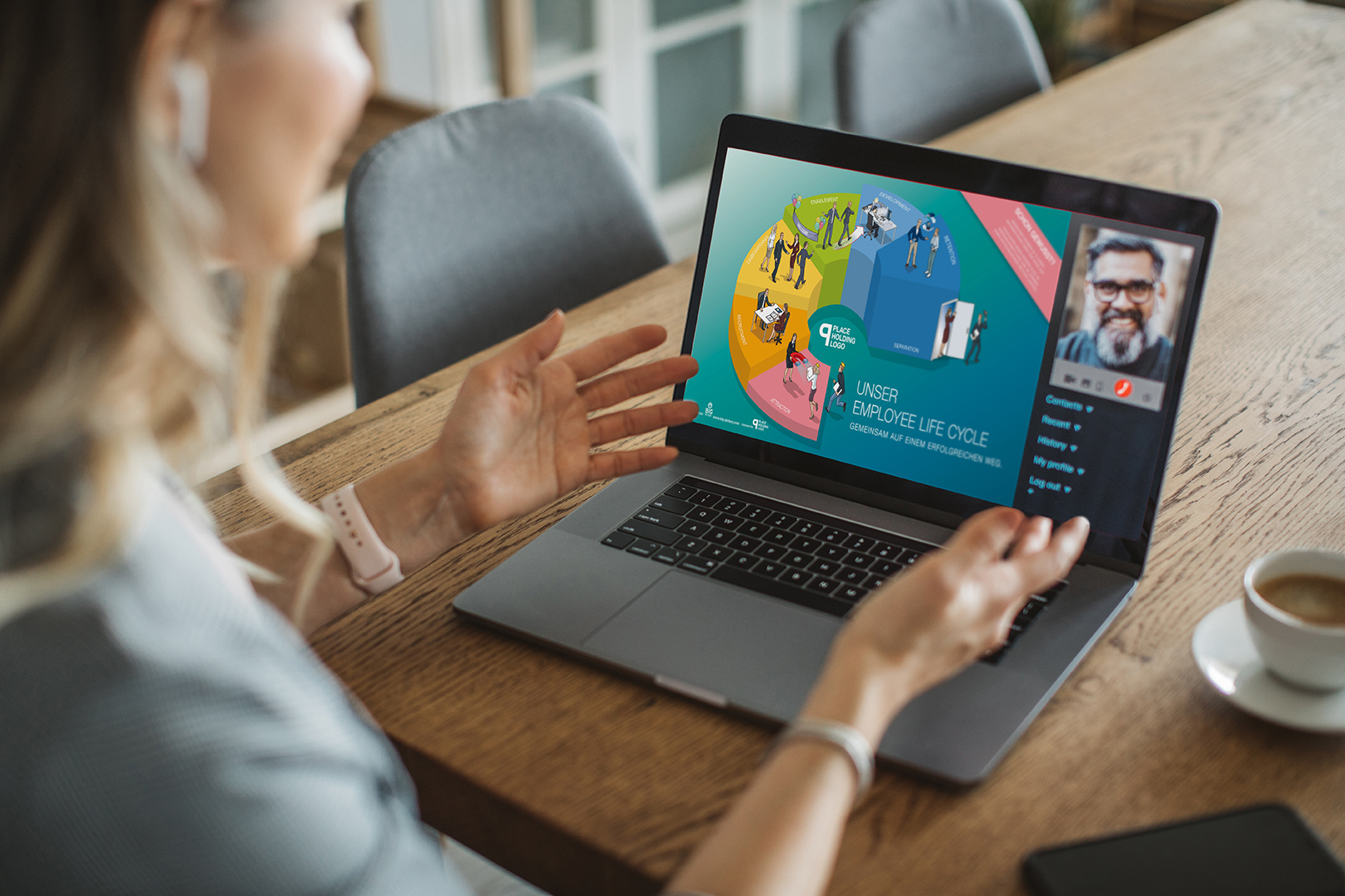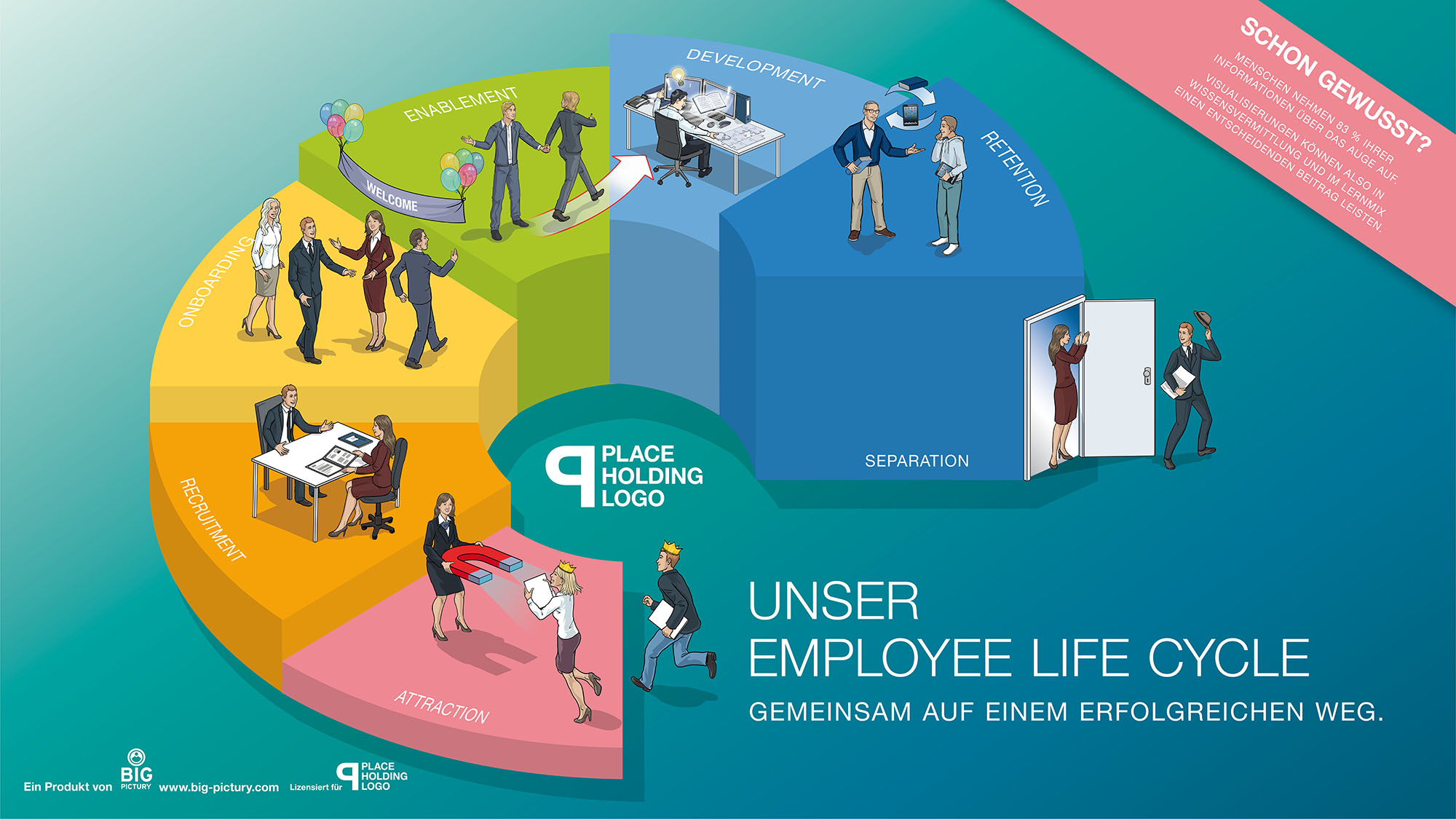While many companies were still sceptical about remote working at the beginning of the Corona pandemic, most concerns have now been dismissed: According to a recent study by the ifo Institute in Munich, 78 per cent of the HR managers surveyed want to stick with remote working in future because of their positive experiences. So-called “hybrid events”, i.e. corporate events in which participants are partly physically present and partly only digitally, will also shape our everyday working life in future. However, there are many questions still to be answered: How, for example, is good and efficient employee and corporate communication supposed to work with these decentralised work structures?
Communication in times of Corona and remote working
Whether in workshops or at general meetings, when onboarding (new) members of staff or during presentations: The right communication is the key to every company’s success. This applies in equal measures to start-ups, medium-sized companies and large corporations. But especially in times of Corona and remote working, this communication is not always easy, since either all participants attend the online event from their home computer, or only a limited number of participants are allowed to be present – with the rest connected digitally (hybrid events). Either way, companies often have no choice but to convey content on screen.

The challenge of “conveying information on screen”
Despite all the advantages and flexibility that digitalisation and the Internet offer us today, there is, however, one problem: things don’t quite come to life between people on screen in the same way as they do in a face to face conversation. This is especially true when it comes to conveying complex content. This is mainly due to the fact that humans normally perceive things using the five senses they have at their disposal: sight, hearing, smell, taste and touch. People usually use all these senses to help them perceive information in their surroundings, which is then collected, processed and transformed in the brain. However, in a digital meeting, many of these senses, which normally support the processing and storage of information, are no longer involved in absorbing information. Therefore, it’s a good idea to focus more on the sense which people use to absorb roughly 83 percent of all information: sight.
A picture says more than 1,000 words
Many talks or workshops involve complicated texts, series of numbers and technical data. Using pictures to visualise the most important content makes all of these things easier to convey. This is because visualisations cut down on the complexity of information and also help to convey more complex content and messages in a way that is compact, precise and clear. However, it’s key to remember that not all pictures are the same. Many presentations use complex diagrams or infographics that often fail to get to the heart of the most important messages, simply because they contain too much detailed information. This is where Big Pictures go one step further than conventional infographics. Big Pictures not only help to grasp complex content and processes quickly and vividly, but also help to internalise them better. This is because Big Pictures appeal to people on an emotional level: not only do connections and processes become more apparent, they are also anchored in a narrative framework. This immersive experience is reinforced by the fact that the viewers themselves are part of the Big Picture: They recognise themselves as figures in the picture itself. This leads to them establishing an inner connection to what is being shown more quickly and internalising it better.
Whether as a large-format print picture as a background image for live streaming, as an interactive click version in which those taking part can click through the picture scene by scene, or as animated video picture with voice-over: there is a wide range of possibilities for integrating Big Pictures into hybrid or completely online events, meaning they can therefore play a key role in digital communication.
If you’d like us to create a Big Picture for you in a similar style, have a look at our templates HERE


0 Comments for “Knowledge transfer on screen: Big Pictures as the perfect complement in digital communication.”